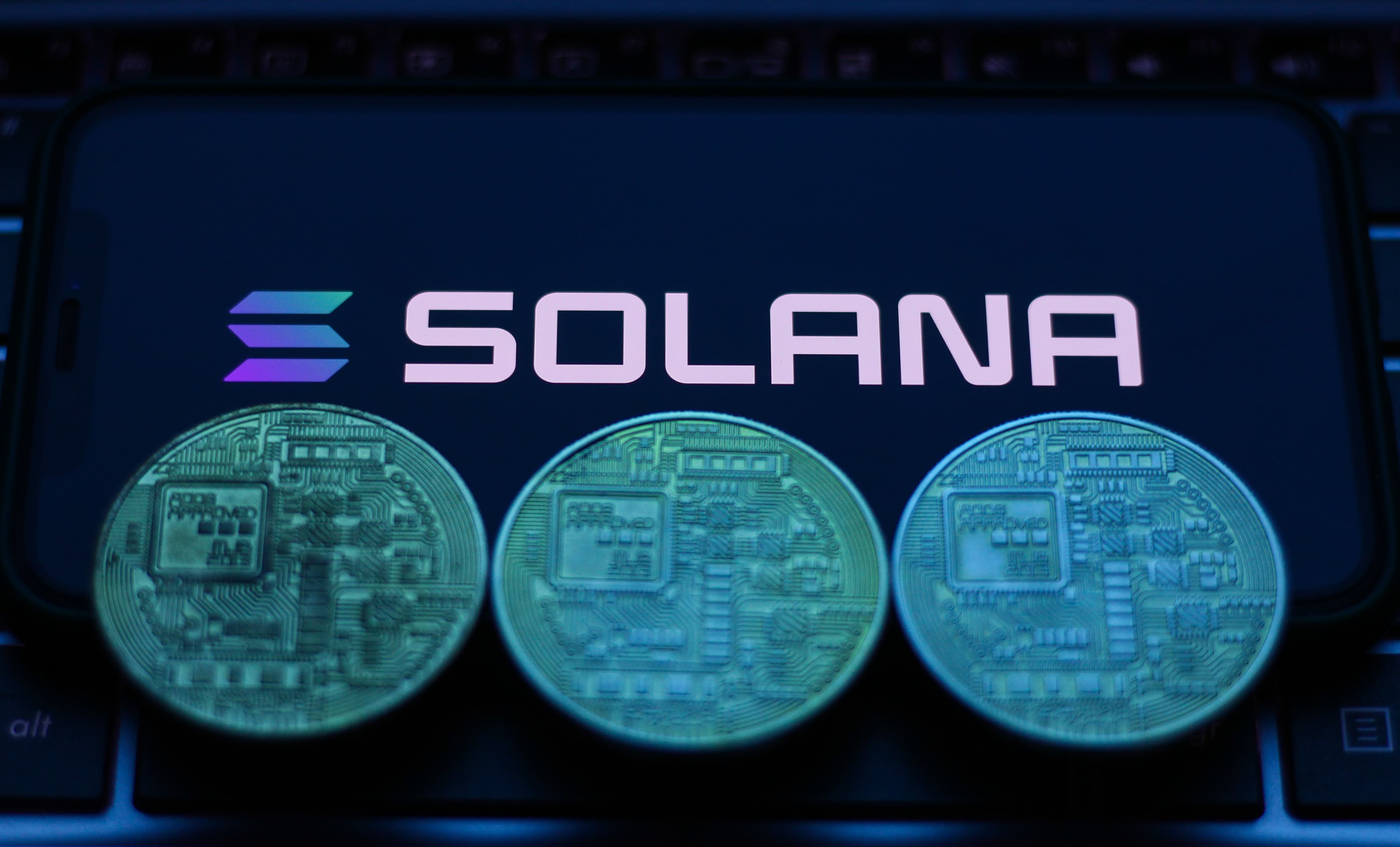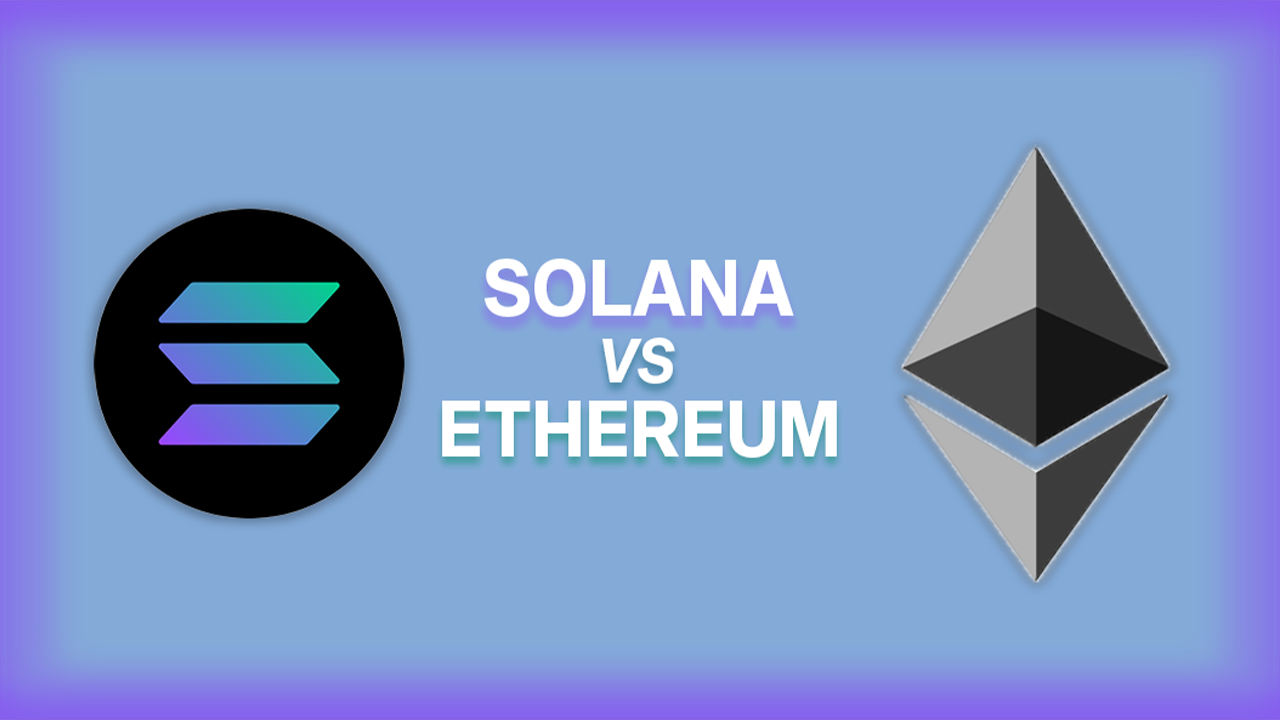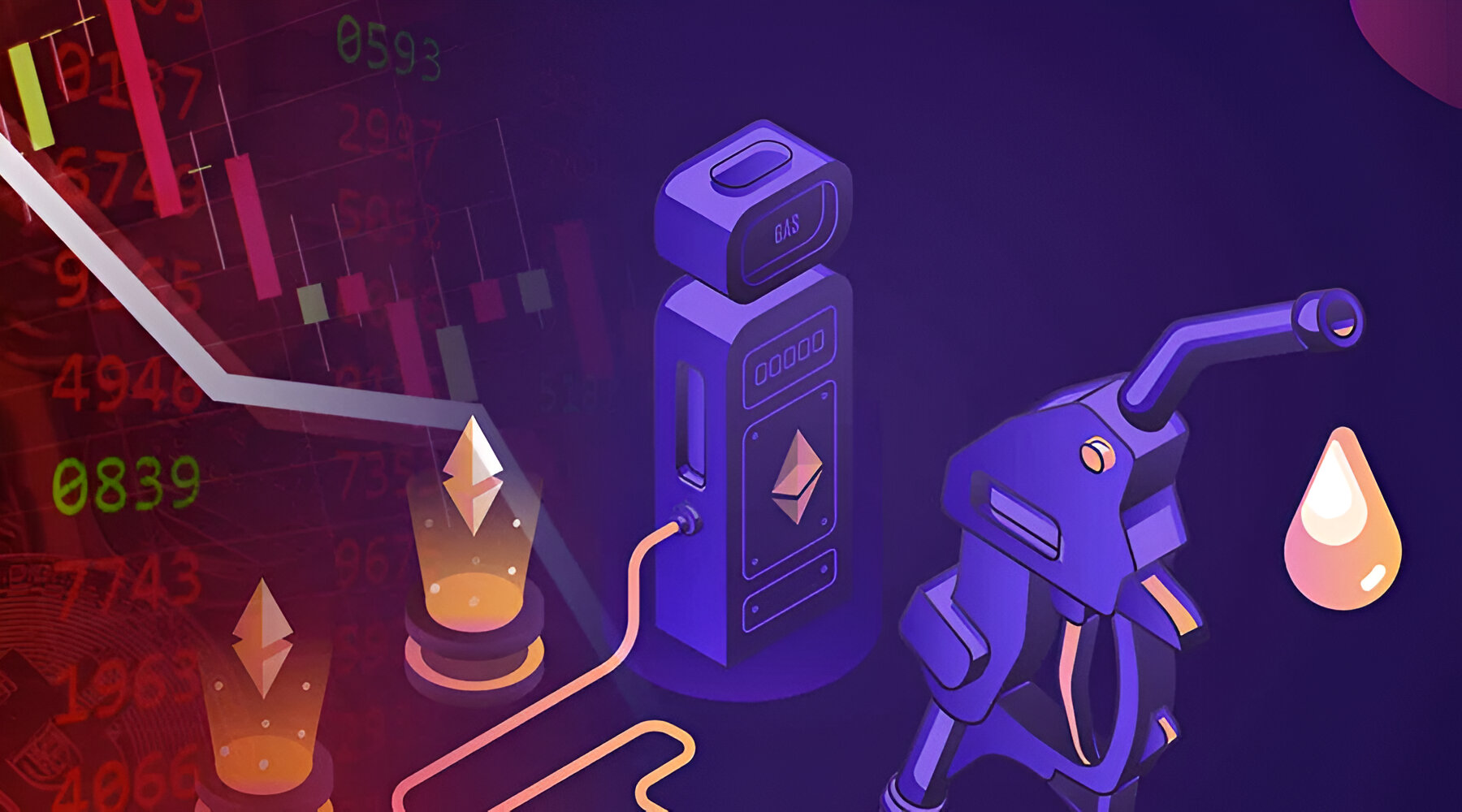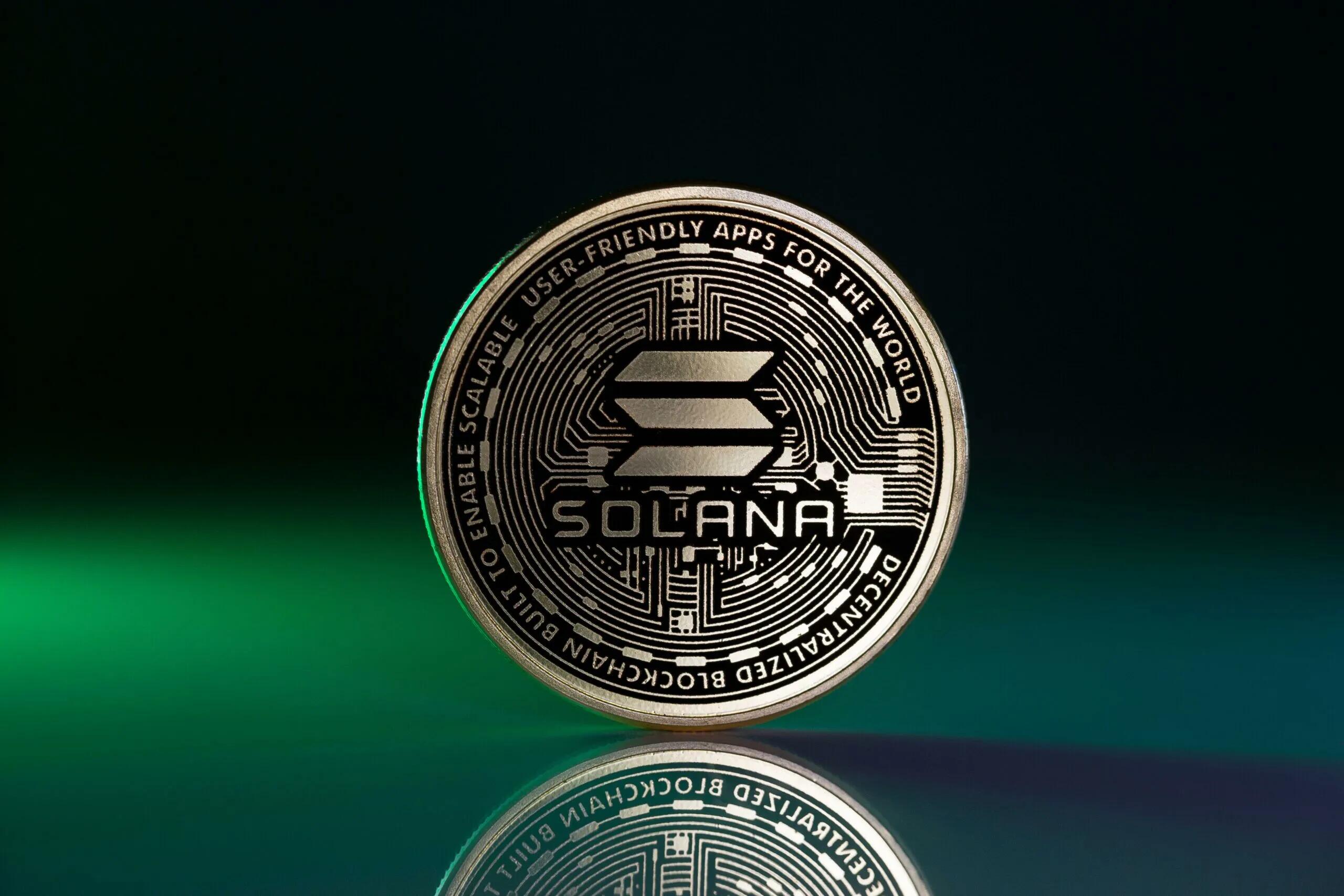Introduction
Welcome to the world of Solana Smart Contracts! In this article, we will explore the fascinating realm of Solana, an open-source, high-performance blockchain platform that is gaining popularity for its scalability and low transaction costs.
If you are a developer eager to dive into the world of blockchain and decentralized applications (dApps), Solana provides an excellent opportunity to leverage your coding skills and create smart contracts that can revolutionize various industries.
Solana stands out among other blockchain platforms due to its lightning-fast transaction processing speed and its ability to handle thousands of transactions per second. It achieves this impressive performance through its unique architecture that utilizes Proof of History (PoH) and Byzantine Fault Tolerance (BFT) consensus mechanisms.
In this article, we will guide you through the process of setting up your development environment, understanding Solana Smart Contracts, and writing your first Solana Smart Contract. We will also cover topics such as compiling and deploying smart contracts, interacting with them, testing and debugging, and best practices for coding in Solana.
By the end of this guide, you will have a solid understanding of Solana Smart Contracts and be ready to embark on your journey as a Solana developer. So, without further ado, let’s get started!
What is Solana?
Solana is a high-performance blockchain platform designed to support decentralized applications and smart contracts. It aims to address the scalability limitations faced by many other blockchain networks, enabling developers to build fast and efficient applications that can handle high transaction volumes.
One of Solana’s key features is its incredible transaction processing speed. Unlike traditional blockchains that struggle with slow confirmation times and limited throughput, Solana leverages a unique combination of cutting-edge technologies to achieve blazing-fast performance. It utilizes a combination of Proof of History (PoH), a verifiable time-stamping mechanism, and Byzantine Fault Tolerance (BFT), a consensus algorithm that ensures network reliability and security.
The PoH technology in Solana enables the network to maintain an immutable and verifiable record of transactions over time. It creates a historical reference, allowing participants to quickly synchronize with the network and verify the chronological order of events. This innovative approach eliminates the need for time-consuming consensus algorithms, contributing to Solana’s exceptional scalability.
Another notable feature of Solana is its low transaction costs. As the network is designed for scalability, the cost per transaction remains relatively low even during high network traffic periods. This affordability makes Solana an attractive choice for developers seeking to build cost-effective decentralized applications.
Furthermore, Solana is built on a programming language known as Rust, which offers developers a secure and efficient environment for building smart contracts. The Solana ecosystem also provides several development tools, such as the Solana Command Line Interface (CLI) and the Solana Software Development Kit (SDK), which simplify the process of creating, testing, and deploying smart contracts.
By leveraging Solana’s innovative features and developer-friendly tools, developers can unleash their creativity and build highly scalable and efficient decentralized applications. Whether it’s creating decentralized finance (DeFi) platforms, non-fungible token (NFT) marketplaces, or innovative gaming applications, Solana provides an ideal platform to turn ideas into reality.
Now that we have explored the basic concepts of Solana, it’s time to set up our development environment and start building Solana smart contracts. In the next section, we will guide you through the process of setting up your development environment step-by-step to ensure you are ready for the exciting journey ahead.
Setting up the Development Environment
Before diving into the world of Solana Smart Contracts, you need to set up your development environment to ensure a smooth coding experience. In this section, we will guide you through the necessary steps to get your environment up and running.
The first step is to install and configure the Solana Command Line Interface (CLI), which provides a command-line interface for interacting with the Solana network. The CLI allows you to compile, deploy, and manage your smart contracts easily.
To install the Solana CLI, you can follow the official documentation for your operating system. It requires basic dependencies like Node.js and npm (Node Package Manager). Once installed, you can verify the installation by running the command solana --version in your terminal.
Next, you need to connect to a Solana network. The Solana network consists of various nodes that validate and process transactions. You can connect to the mainnet if you want to interact with the live Solana network or use a local network for development and testing purposes.
If you choose to set up a local network, you can run a local Solana cluster using the Solana CLI. This allows you to experiment and test your smart contracts in a controlled environment. You can start a local cluster by running the command solana-test-validator in your terminal.
Once your development environment is set up, you can start writing your Solana smart contracts using the Rust programming language. Rust is a safe, concurrent, and fast programming language that ensures the security and efficiency of your smart contracts.
To get started with writing Solana smart contracts, you can utilize the Solana Software Development Kit (SDK). The SDK provides a collection of libraries and tools that simplify the development process. It includes useful functions and abstractions that assist you in interacting with the Solana network, deploying your smart contracts, and handling transactions.
In addition to the SDK, Solana offers extensive documentation and resources to guide you through the development process. You can explore the Solana developer documentation, which includes tutorials, guides, and examples to help you understand the core concepts of Solana and develop robust smart contracts.
Now that you have set up your development environment and familiarized yourself with the necessary tools and resources, you are ready to dive deeper into Solana smart contract development. In the next section, we will explore the fundamentals of Solana smart contracts, enabling you to understand their structure and functionalities.
Understanding Solana Smart Contracts
Solana Smart Contracts play a vital role in the decentralized ecosystem of Solana. They are self-executing contracts with the terms of the agreement directly written into code and deployed on the Solana blockchain. These contracts allow for the automation, transparency, and trustworthiness of transactions without relying on intermediaries.
In Solana, smart contracts are implemented using the Rust programming language, which offers security, performance, and reliability. Rust’s memory safety and strict compile-time checks ensure that smart contracts are less prone to vulnerabilities and bugs.
Smart contracts in Solana follow the same principles as other blockchain platforms. They consist of a set of functions and data structures that define the behavior and properties of the contract. These functions can be invoked by external actors or other contracts to perform specific operations and update the state of the contract.
One of the key elements in Solana smart contracts is the Account. Accounts are data structures that store the state and data associated with the smart contract. They can hold both native Solana tokens and custom data structures defined by the contract.
Transactions are the means by which changes to the state of a smart contract are initiated and executed. Transactions bundle multiple instructions, such as invoking functions or transferring tokens, into a single atomic operation. This ensures that either all instructions in the transaction are executed or none of them are.
Smart contracts on the Solana blockchain are executed by the validators in a decentralized manner. Validators validate the transactions and execute the instructions specified in the smart contract code. The consensus mechanism of the Solana blockchain ensures the agreement and synchronization of the contract state across all participating nodes.
Interactions with Solana smart contracts are typically done through wallets or dApps (decentralized applications). Users can invoke specific functions of the smart contract by sending transactions to the contract’s address. These transactions can perform operations like transferring tokens, updating the contract’s state, or querying information from the contract.
One unique aspect of Solana smart contracts is the low transaction costs and fast processing times. Solana’s high-performance blockchain allows for efficient and cost-effective execution of smart contracts, making it an attractive platform for developers.
Now that we have gained an understanding of Solana smart contracts and their key components, it’s time to put our knowledge into practice. In the next section, we will guide you through the process of writing your first Solana smart contract, enabling you to experience the power of decentralized contract execution firsthand.
Writing Your First Solana Smart Contract
Congratulations! You’re ready to dive into the world of coding Solana Smart Contracts and bring your decentralized application ideas to life. In this section, we will guide you through the process of writing your first Solana Smart Contract.
The first step is to set up a new Rust project. Open your command-line interface and navigate to the desired directory. Use the following command to create a new Rust project:
cargo new your_project_name
This will create a new directory with your chosen project name, containing the necessary files for a Rust project.
Next, navigate to your project directory:
cd your_project_name
Now it’s time to set up the dependencies for your Solana Smart Contract. Open your `Cargo.toml` file and add the following dependencies:
[dependencies]
solana-program = "1.7.0"
solana-sdk = "1.7.0"
Save the `Cargo.toml` file and run the following command to update the dependencies:
cargo update
With the dependencies set up, let’s start coding the smart contract logic. Open the `lib.rs` file located in the `src` directory. This is where you will define your Solana Smart Contract.
For demonstration purposes, let’s create a simple smart contract that transfers tokens between accounts. Declare the necessary `use` statements at the top of your `lib.rs` file:
use solana_program::{
account_info::{next_account_info, AccountInfo},
entrypoint,
entrypoint::ProgramResult,
pubkey::Pubkey,
program_error::ProgramError,
};
Now, define your program entrypoint:
#[no_mangle]
pub fn entrypoint(program_id: &Pubkey, accounts: &mut [AccountInfo], instruction_data: &[u8]) -> ProgramResult {
// Code for your smart contract
// ...
Ok(())
}
Inside the `entrypoint` function, you can write the logic for your smart contract. This can include operations such as account validation, token transfers, data storage, and more. For this example, let’s focus on transferring tokens:
#[no_mangle]
pub fn entrypoint(program_id: &Pubkey, accounts: &mut [AccountInfo], instruction_data: &[u8]) -> ProgramResult {
// Get the source and destination account information
let accounts_iter = &mut accounts.iter();
let source_account = next_account_info(accounts_iter)?;
let destination_account = next_account_info(accounts_iter)?;
// Get the amount of tokens to transfer
let amount = u64::from_le_bytes(instruction_data.try_into().unwrap());
// Validate source account has enough tokens
if source_account.lamports() - amount < 0 {
return Err(ProgramError::InsufficientFunds);
}
// Transfer tokens from source to destination
**source_account.lamports.borrow_mut() -= amount;
**destination_account.lamports.borrow_mut() += amount;
Ok(())
}
Now, your Solana Smart Contract is complete! You can add additional functionality and customize it according to your application’s requirements.
Next, build your smart contract by running the following command in your project directory:
cargo build-bpf --target solana-bpf-rust
This will compile your Rust code into a WebAssembly format that can be deployed on the Solana blockchain.
Now that your Solana Smart Contract is compiled, you are ready to deploy it on the Solana network and interact with it using transactions.
Writing your first Solana Smart Contract is an exciting milestone in your journey as a Solana developer. In the next section, we will explore the process of compiling and deploying Solana Smart Contracts, allowing you to bring your contracts to life on the network.
Compiling and Deploying Solana Smart Contracts
Now that you have written your Solana Smart Contract, the next step is to compile it into a format that can be deployed on the Solana blockchain. In this section, we will explore the process of compiling and deploying Solana Smart Contracts.
To compile your Solana Smart Contract, you need to use the Solana Command Line Interface (CLI). Make sure you have the latest version of the Solana CLI installed. If you haven’t installed it yet, refer to the Solana documentation for installation instructions specific to your operating system.
Once you have the Solana CLI installed, navigate to your project directory in the command-line interface. Run the following command to build your Solana Smart Contract:
solana program compile path/to/your/program.rs
This command will compile your Rust code into a deployable format called a Program Binary File (PBF). The PBF is a binary representation of your smart contract’s bytecode that can be deployed on the Solana network.
After the compilation process is complete, you will find the generated PBF file in the same directory as your Rust code. The file name will have a `.so` extension.
Now that you have your compiled Solana Smart Contract, it’s time to deploy it on the Solana network. Before proceeding, ensure you have an active Solana wallet with sufficient funds for the deployment transaction fees.
To deploy your smart contract, you need to use the Solana CLI again. Run the following command:
solana program deploy path/to/your/program.so
This command will deploy your Solana Smart Contract to the Solana network. Upon successful deployment, you will receive a transaction confirmation hash and the address of the deployed contract on the network.
With your contract deployed, you can now interact with it using transactions. You can send transactions to the contract’s address to invoke its functions and perform operations defined in your Solana Smart Contract code.
Remember to store the address of your deployed smart contract, as you will need it for future interactions and transactions.
Compiling and deploying Solana Smart Contracts is a crucial step in the development process. It allows you to make your contracts available on the Solana blockchain and start utilizing their functionalities within decentralized applications.
In the next section, we will delve into the process of interacting with Solana Smart Contracts, enabling you to utilize the power of your deployed contracts and build engaging decentralized applications.
Interacting with Solana Smart Contracts
Now that you have successfully deployed your Solana Smart Contract on the blockchain, it’s time to explore how to interact with it. In this section, we will cover the process of interacting with Solana Smart Contracts through transactions.
Interacting with Solana Smart Contracts involves sending transactions to the contract’s address. These transactions contain instructions that trigger specific functions within the contract. By invoking these functions, you can perform operations, update the contract’s state, and retrieve information.
To interact with Solana Smart Contracts, you will need the following:
- Your Solana wallet with sufficient funds to cover transaction fees
- The address of the deployed smart contract on the Solana network
Using the Solana Command Line Interface (CLI), you can send transactions to the smart contract’s address. The transactions can include the necessary instructions and arguments required by the contract’s functions.
Let’s say you have a Solana Smart Contract that allows users to transfer tokens. To initiate a token transfer, you would construct a transaction with the following instructions:
- Instruction to specify the token transfer function within the smart contract
- Arguments such as the source account, destination account, and the amount of tokens to transfer
Once the transaction is constructed, you can sign it with your Solana wallet’s private key to verify your identity. This ensures that only authorized individuals can interact with the contract.
After signing the transaction, you need to broadcast it to the Solana network for processing. Use the Solana CLI to send the transaction:
solana transfer --from your_wallet_address --to smart_contract_address --amount 10.0 --signer your_wallet_private_key
This command transfers a specific amount of tokens (10.0 in this example) from your wallet’s address to the smart contract’s address.
After broadcasting the transaction, you will receive a confirmation hash. This hash serves as proof that the transaction has been added to the Solana blockchain and is now being processed by the network.
It’s important to note that interacting with Solana Smart Contracts may require additional instructions and arguments based on the contract’s functionalities. Make sure you have a clear understanding of the contract’s API and function parameters to construct the transactions correctly.
By interacting with Solana Smart Contracts, you can build sophisticated decentralized applications that leverage the power of blockchain technology. Whether it’s transferring tokens, updating data, or triggering complex operations, Solana Smart Contracts provide a versatile platform for decentralized application development.
In the next section, we will discuss the importance of testing Solana Smart Contracts and how to ensure the reliability and functionality of your contract code.
Testing Solana Smart Contracts
Testing plays a crucial role in the development process of Solana Smart Contracts. Thorough testing ensures the reliability, functionality, and security of your contract code. In this section, we will explore the importance of testing Solana Smart Contracts and discuss strategies to ensure the quality of your contracts.
When it comes to testing Solana Smart Contracts, there are several key aspects to consider:
- Unit testing: Unit tests focus on testing individual components of your smart contract in isolation. You can write tests to ensure the correct execution of functions, verify the expected state changes, and validate edge cases. Solana provides testing frameworks and libraries, such as
solana-program-test, that enable you to write comprehensive unit tests. - Integration testing: Integration tests verify the interaction between multiple components of your smart contract. These tests ensure that different functions, modules, or external dependencies work together as expected. Integration testing helps identify any potential issues that may arise when various parts of your contract interact.
- Edge case testing: It is important to test your Solana Smart Contracts with various edge cases to validate their behavior in unexpected scenarios. This can include testing the handling of large inputs, invalid data, exceptional conditions, or reaching contract limits. By testing edge cases, you can ensure that your contract performs as intended under all circumstances.
- Security testing: Security testing focuses on finding vulnerabilities or potential exploits in your smart contract code. It involves conducting code reviews, performing audits, and running static analysis tools to identify common vulnerabilities like reentrancy, integer overflows, or unauthorized access. Security testing is crucial to prevent potential attacks and protect users’ funds.
When writing tests for your Solana Smart Contracts, it’s essential to simulate the Solana environment as closely as possible. You can use Solana’s test frameworks and network emulators to create an environment that closely resembles the mainnet environment, allowing you to test your contracts in a controlled and realistic setting.
Additionally, consider implementing test-driven development (TDD) methodologies when developing your Solana Smart Contracts. TDD involves writing test cases before writing the actual contract code. This approach ensures that your contract behaves as expected and helps catch any potential bugs early in the development process.
Regularly running automated tests and performing manual testing can significantly improve the quality and reliability of your Solana Smart Contracts. It is crucial to adopt a rigorous testing process, especially when handling sensitive data or financial transactions.
By investing time and effort in testing your Solana Smart Contracts, you can identify and address any issues or vulnerabilities, ensuring the reliability, security, and functionality of your contracts.
In the next section, we will discuss the importance of debugging Solana Smart Contracts and explore techniques to identify and fix issues in your contract code.
Debugging Solana Smart Contracts
Debugging is an essential aspect of developing Solana Smart Contracts. It allows you to identify and fix issues in your contract code, ensuring that your contracts function as intended. In this section, we will explore the importance of debugging and discuss techniques to effectively debug Solana Smart Contracts.
When encountering issues in your Solana Smart Contracts, it’s crucial to have a systematic approach to debugging. Here are some techniques to help you debug your contracts:
- Logging and Print Statements: Utilize logging or print statements within your contract code to output specific variable values or execution information during runtime. These statements can provide insights into the contract’s behavior and help you narrow down the source of the issue.
- Event Emitters: Emitting events within your contract code can help you understand the flow and execution of your contract. By logging important events and state changes, you can track the progress of your contract and identify any unexpected behavior.
- Step-by-Step Execution: Consider executing your contract code step by step, either through manual tracing or using debugging tools provided by the Solana ecosystem. This allows you to observe the contract’s state and variable values at each step, helping you pinpoint the exact location of the issue.
- Error Handling and Error Messages: Implement appropriate error handling mechanisms within your contract code to provide meaningful error messages when an issue occurs. Well-crafted error messages can assist in understanding the root cause of the problem and guide you towards the necessary fixes.
- Code Review and Pair Programming: Seek assistance from peers or experienced developers through code reviews or pair programming sessions. Fresh perspectives and additional sets of eyes can often spot issues that may have been overlooked. Collaborating with others can lead to faster debugging and more efficient problem-solving.
Additionally, the Solana ecosystem provides various debugging tools to aid in the debugging process. The Solana CLI offers functionalities like transaction inspection, program logs, and viewable account states. These tools can help you understand the state of your contract in different stages of execution and assist in identifying any abnormal behavior.
Debugging Solana Smart Contracts requires patience and a methodical approach. It’s important to remain persistent and thorough when investigating issues in your code. By utilizing the available debugging techniques and seeking help from the Solana community, you can overcome challenges and improve the reliability of your smart contracts.
In the next section, we will explore best practices for coding Solana Smart Contracts. These best practices can help you write cleaner, more efficient, and more secure contract code.
Best Practices for Coding Solana Smart Contracts
When coding Solana Smart Contracts, adhering to best practices is crucial to ensure the efficiency, security, and maintainability of your codebase. In this section, we will discuss some key best practices for coding Solana Smart Contracts.
- Code Readability: Write clear and well-organized code. Use meaningful variable and function names, add comments where necessary, and follow consistent indentation and formatting conventions. This makes your code more readable, easier to understand, and maintain in the long run.
- Modularity: Break down your contract logic into smaller, reusable modules or functions. This promotes code reusability and helps keep your contract codebase concise and organized.
- Gas Consumption: Be mindful of the gas consumption of your Solana Smart Contract. Gas represents the computational resources required to execute your contract. Optimize your code by minimizing expensive operations, avoiding unnecessary computations, and utilizing efficient algorithms.
- Input Validation and Error Handling: Validate and sanitize user inputs to ensure that only expected and safe inputs are accepted. Implement robust error handling mechanisms to provide meaningful error messages and gracefully handle exceptional conditions.
- Security: Pay careful attention to potential security vulnerabilities like reentrancy attacks, integer overflows, or unauthorized access to sensitive data. Review your code for common security issues and follow security best practices to protect your contract and users’ funds.
- Code Documentation: Document your contract code thoroughly to provide clarity to other developers who may review or work on your code. Include details on the purpose, inputs, outputs, and any constraints or limitations of each function or module.
- Code Reviews: Conduct regular code reviews to ensure the quality and reliability of your contract code. Engage with the Solana developer community or enlist the help of experienced peers to provide feedback and identify areas for improvement.
- Testing: Rigorously test your Solana Smart Contracts using unit tests, integration tests, and edge case scenarios. Test-driven development (TDD) methodologies can help identify issues early and improve the overall quality of your code.
- Versioning and Upgradability: Plan for future contract upgradability by incorporating versioning mechanisms. This allows for seamless upgrades and maintenance of your contract without compromising your user’s data or funds.
By following these best practices, you can enhance the security, reliability, and efficiency of your Solana Smart Contracts. Writing clean, well-structured code and adhering to coding standards not only benefits you as a developer but also ensures a smoother experience for users interacting with your contracts.
In the next section, we will wrap up our exploration of Solana Smart Contracts and summarize the key takeaways from this guide.
Conclusion
Congratulations! You have reached the end of this guide on Solana Smart Contracts. Throughout this article, we explored the world of Solana, setting up the development environment, understanding Solana Smart Contracts, writing and deploying contracts, as well as testing and debugging best practices.
Solana has emerged as an exciting blockchain platform, offering high performance, scalability, and low transaction costs. With Solana Smart Contracts, developers have the opportunity to build innovative decentralized applications that can transform industries and empower users.
As you embark on your journey as a Solana developer, remember to prioritize code readability, modular design, and robust error handling. Embrace a testing and debugging mindset to ensure the reliability and security of your contracts. By adhering to best practices and continuously learning from the Solana community, you can refine your skills and deliver exceptional smart contract solutions.
Solana presents a wealth of opportunities for developers seeking to create groundbreaking decentralized applications. Make use of the Solana CLI, development tools, and documentation to harness the full potential of this blockchain platform.
Now that you have a solid foundation in Solana Smart Contracts, it’s time to put your knowledge into practice and start building your first Solana-based application. Remember, the Solana ecosystem is constantly evolving, so stay up to date with the latest developments and explore new possibilities in this exciting space.
Thank you for joining us on this journey through Solana Smart Contracts. Happy coding and best of luck with your future Solana endeavors!

























